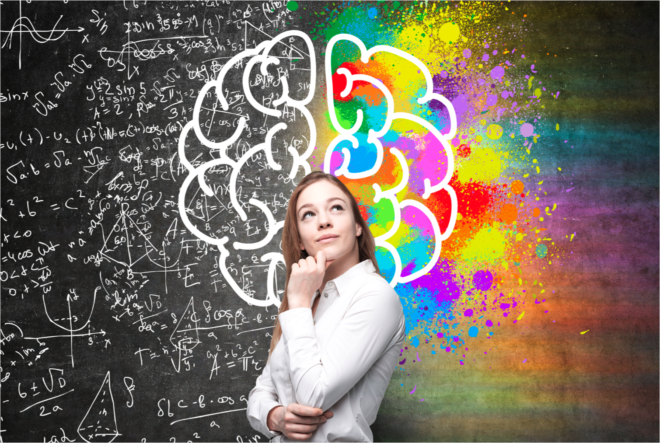How can the theories of Cognitive Science developed from observations of human behavior be reconciled with Neuroscience or the behavior of the brain?
You’ve probably heard of multiple intelligences—such as verbal, spatial, abstract, analytic, emotional, musical, and physical (or others, depending on who you ask). There are also “the three learning styles,” (audio / visual / kinesthetic) and the Myers-Briggs classifications (I’m INTP, I think)—all different ways of modeling cognitive individuality. There is also “theory of mind,” growth mindset versus fixed mindset, autistic and schizotypal tendencies, and of course, individual preferences and desires. All these complex aspects of individuality are to some degree hypothetical. I mean, “theory of mind” for example definitely refers to abilities that people have to varying degrees, but what those abilities are made of—that remains hypothetical. Ditto for the rest of the above.
More fundamental and better understood aspects of cognitive individuality include memory (several kinds), attention, executive functioning, cognitive fluidity, speed of processing (a major component of IQ), linear versus associative thought, dependence-independence, and impulsiveness-reflectiveness (Saracho 2006).
All these proposals are based on data and insightful reasoning. But beyond the basics, they’re awfully questionable. Being good at math doesn’t mean there’s a box full of mathematical intelligence in your brain; it might be because you’ve got a great memory and you’re methodical. Or you might have a lousy memory, but a great ability to see patterns. And if you’re “on the spectrum” is it because you lack mirror neurons, or a “theory of mind,” or “meta-representation,” or “sensory integration,” or is the root dysfunction emotional? Like all scientific models, cognitive models carve reality (the brain) along certain imaginary lines within the limits of our knowledge.
The question of how to acquire true knowledge about a mind other than one’s own is one of the greatest unsolved problems of science and philosophy. In all other sciences, we can (ideally, in some sense) observe the object of study. But nobody can observe the contents of a mind except its owner. We can observe the neural activity, but so far (and probably for a while yet), we cannot observe what’s happening in the minds of subjects.
The data of observed brain activity is meaningless unless compared with the internal perspective (or at least indirect indicators of it). So, we have no choice but to rely on first-person verbal reports, performance on tests, and other observable behaviors, and infer what is happening in the mind. But trying to determine facts about the mind by asking people to describe their experiences, or by observing their behavior, is somewhat like trying to paint a portrait of someone based on their shadow; you could ask them to turn every which way, but you’re still going to miss a lot!
We are also limited by the invisible blinders of culture and language, which bias our thought and render all tests sensitive to the cultural backgrounds of both subjects and researchers. These are all reasons that neuroscience needs to look at more different brains than it ever has before.
We have the potential now to analyze more data, using more powerful computational and analytical techniques–and crowd-sourcing. Cognitive science has made its sweeping claims about intelligences and other factors based on the data of millions of psychological and IQ tests. Most studies in neuroscience have been limited to 25 subjects! And neuroscience, because it developed independently, and under the limitations of brain scan technology, has focused on just a few very general cognitive factors—executive function, attention, and memory.
How can we link the aspects of mind identified by cognitive science with brain structures and activity? Two things – more data – 1000s of brains – and more communication, and collaboration. Researchers in the various mind / brain sciences working together more. And using our new tech, we can get more information out of EEG data than ever before, allowing us to look into 1000s of brains, and we should learn a few things!
Read related posts The Myth of the Average Brain and The Murky Borders of Brain Dysfunction
Works Cited
Saracho, Olivia N., “Cognitive styles: Characteristic modes of individuality and diversity,” Early Child Development and Care, Volume 29, Issue 2, 1987. Published online, August 2006. http://www.tandfonline.com/doi/abs/10.1080/0300443870290201
Dr. Aaron Nitzkin has a PhD in Cognitive Linguistics and an interest in cognitive science and the philosophy of mind.

